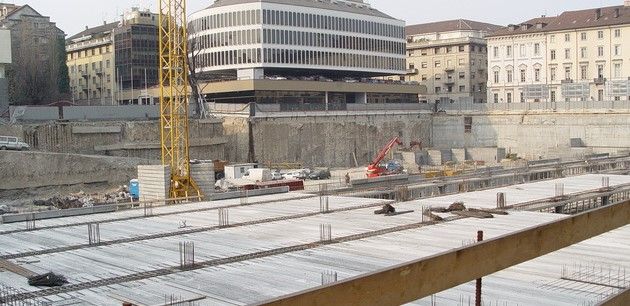Concrete is one of the most used substances on the planet. Each year, according to a Columbia University study, more than 10 billion tonnes of it are poured.
But while most people like to think that once it has set concrete is a carefree rock that will outlive us all, it does in fact require regular attention.
Water retention and cracking mean that concrete structures such as buildings, roads, and bridges require ongoing upkeep and repair.
Currently, modern approaches to reducing maintenance costs and extending concrete’s lifespan involve the application of hydrophobic coatings that restrict water penetration, especially the damage that can be caused by chloride ions that are common in public water systems.

Construction technology today relies on three main methods, each with varying degrees of success dependent on the conditions and materials used:
· Applying a continuous film that coats the top of a concrete surface
· Creating a ‘hydrophobic impregnation’ of surface particles to form water-repellent concrete
· Forming a protective barrier or film by ‘impregnating’ soluble surface constituents
But now new methods are being found through the application of nanotechnology. For example, a recent study published in the Journal of Building Engineering has found a significant improvement in concrete performance through the use of a graphene oxide coating.
Specifically, the study looked at graphene oxide’s protective effect on concrete and its ability to prevent water and ion penetration.
The work involved applying a 9mg layer of graphene oxide on samples of concrete by either spraying, brushing, or submerging.
Analysis of the samples for water absorption, vapour permeability, and capillary absorption found that the nanocoatings had reduced volumetric and capillary intake of water by approximately 40% and 57% respectively.
The researchers also used scanning electron microscope (SEM) imaging to assess the coating’s quality after 90 days, and also performed, “Fourier-transform infrared spectroscopy (FTIR) to assess any molecular changes, and a rapid chloride permeability test (RCPT) to evaluate the degree of corrosion due to chloride penetration.”
The results of all tests were promising, with further work being conducted to assess improvements to concrete that can be made when nanoproducts are added to mixes, as opposed to being used as a coating.

Earlier studies have already shown that graphene oxide can increase both concrete’s durability and mechanical strength when added to the mix. And while dispersibility of nanomaterials can be an issue when used as a concrete additive, the nanotechnology journal AzoBuild, states, “… the oxidative functionalities of graphene oxide caused it to disperse more readily in water than any other nanomaterial.”
The AzoBuild reportalso notes a recent study which, “focused specifically on the inclusion of graphene oxide in concrete composites with natural fine and coarse aggregate. The study discovered that the incorporation of graphene oxide, with varying percentage content, can decrease workability but considerably boost compressive strength (21 to 55%) and tensile strength (16 to 38%).”
However, the journal also notes, “The big drawback of adding graphene oxide to cement-based materials is a decreased workability as a result of its relatively large surface area that tends to absorb water. It also has a cumbersome lateral size that has a significant capacity for water retention.”
This is despite the very small amount of nanoadditives needed, with approximately 1% graphene oxide by weight of cement proven to boost concrete’s compressive strength.
A cost/benefit analysis conducted by the researchers found that adding graphene oxide to a volume of 0.06% achieved maximum advantage on 90-day old samples.
Meanwhile, other construction raw material specialists have been looking at alternative nanoadditives, not only to improve concrete performance, but also as a way to recycle building site waste.
For example, the Prague-based company AG CHEMI GROUP (which hosts this web page) has developed a nanotechnology process that adds strength, abrasion resistance, and/or crack prevention while reusing concrete rubble.
“Our portfolio of nanostructured materials includes solutions based on aqueous suspensions, designed to treat concrete mixtures to increase the strength of the concrete structure, including solutions with nanoparticles, which allow the use of construction site waste as a raw material for new building structures,” explains Lev Lyapeikov, the company’s product development manager.
The process involves using nanoparticles and carbon nanotubes in concrete mixtures which include concentrations of recycled materials of between 15% and 40%.

Perhaps most significantly about this development for the nanotechnology industry is that nanocoatings and nanoadditives for concrete are no longer the reserve of researchers and laboratory technicians.
Production of AG CHEMI GROUP’s construction nanoadditives is slated to begin in 2021, meaning that nanotechnology is starting to make a difference on building sites across Europe and in the construction industry everywhere.
To find out more about how nanoadditives are influencing construction and how to invest in nanoadditive production visit AG CHEMI GROUP.
Photo credit: George Bosela from FreeImages, Luca Cinacchio from FreeImages, Luca Cinacchio from FreeImages, & Diane Miller from FreeImages